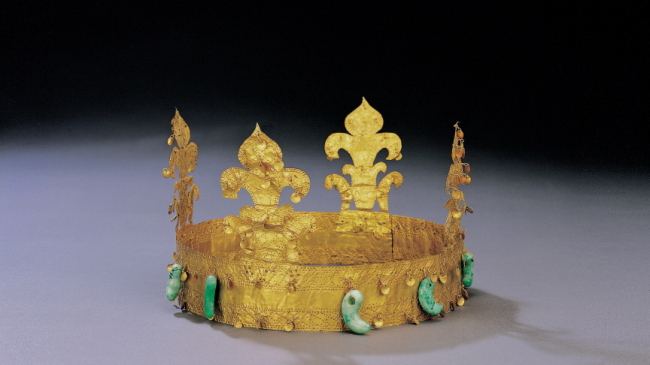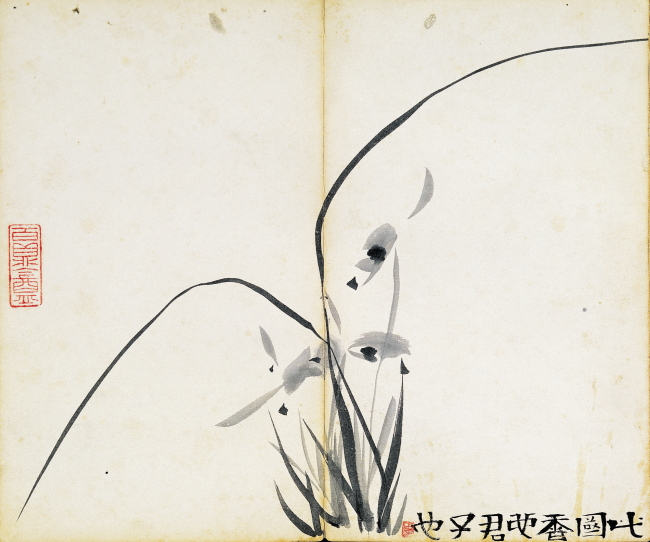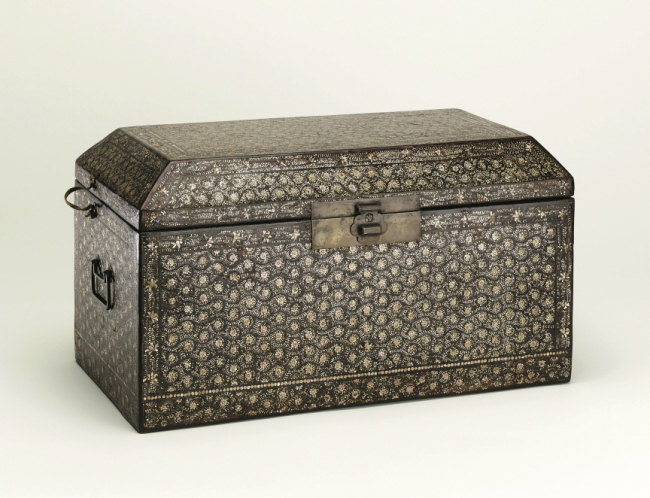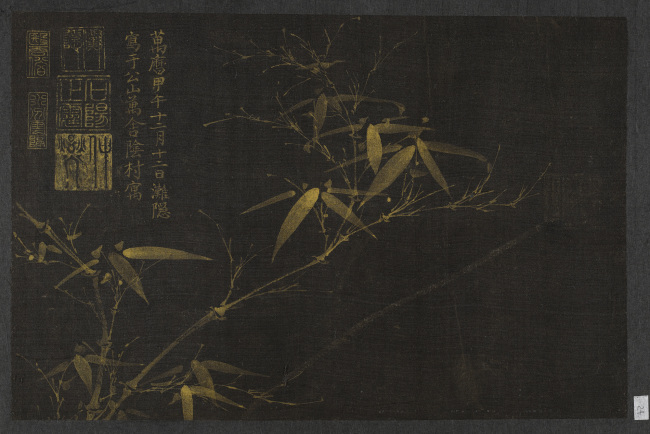Rare pieces of Korean traditional art, spanning from the Bronze Age to the 19th-century Joseon era, have been brought together to present the exquisite beauty of Korean art this summer.
The Leeum, Samsung Museum of Art showcases national treasures of Korea and valuable Korean artifacts on loan from leading foreign art institutions that highlight lavish features, exquisite details and refined artistry.
 |
Crown, 5-6th century, Gaya (Leeum) |
In contrast to the Leeum exhibition exploring the opulence of Korean art, Kansong Museum has put together paintings of plums, orchids, chrysanthemums and bamboo from the Joseon period (1392-1910), so-called “sagunja” paintings that highlight the simplicity of Joseon art. It is the fourth in the exhibition series of the Kansong Art and Culture Foundation taking place at the Dongdaemun Design Plaza.
 |
"Gukyanggunja” by Kim Jeong-hee (Kansong Art and Culture Foundation) |
The “Exquisite and Precious: The Splendor of Korean Art” at the Leeum presents representative art pieces from each historical periods of Korea, including a gold crown, earrings from Gaya and Silla (B.C. 57 - A.D. 935), celadon pieces from Goryeo (918-1392), lacquerware inlaid with mother-of-pearl, Buddhist statues and Joseon paintings.
“This exhibition brings together highlight pieces of traditional Korean art that represent the mastery and meticulousness of Korean craftsmanship,” said Jo Ji-yoon, curator of the exhibition.
For the last four years of preparation, the exhibition gathered six of nine of Goryeo’s lacquered sutra boxes inlaid with mother-of-pearl used to store Buddhist scriptures in the 13th century. The six rare pieces are from the Tokyo National Museum, Kitamura Museum, British Museum, Museum of Fine Arts Boston, Rijksmuseum in Amsterdam and a private collector.
 |
Sutra Box, 13th century, Goryeo (@The Trustees of the British Museum) |
The Goryeo dynasty was so renowned for its advanced mother-of-pearl inlay technique that envoy Xu Jing from China’s Song dynasty wrote in a book published in 1123, “(Goryeo’s) mother-of-pearl inlay techniques are so exquisite that they are truly precious.”
Another highlight piece is the 12th-century celadon ewer of Goryeo on loan from Brooklyn Museum in the U.S.
 |
Celadon Ewer, early 12th century, Goryeo (Brooklym Museum Photograph) |
The light green vessel shows the delicate handicraft of Goryeo celadon masters and their imagination. On close inspection, a small butterfly comes into sight. The adult butterfly has just come out from the chrysalis and sits on the side of the top part, preparing to fly toward the blooming lotus flower.
“The vessel was made for a royal family of Goryeo. Its patterns and decorations are considered to be the best and most elaborate among Goryeo celadon pieces,” said Jo.
The vessel has another story.
Originally owned by Joseon royalty, it was presented by Queen Min of Joseon to Lillias Horton Underwood, the wife of early missionary to Korea Horace Grant Underwood and a doctor who attended to Queen Min. The celadon piece was later donated to the Brooklyn Museum in New York City by the Underwood family.
The Kansong Art and Culture Foundation also reveals 100 Joseon paintings from its prized collection of Korean traditional art.
“The Four Gracious Plants” at the Dongdaemun Design Plaza features sagunja paintings of plums, orchids, chrysanthemums and bamboo -- symbols that represent virtues the Joseon literati upheld, such as loyalty, integrity, nobility and strong willpower.
It shows a rare book with still-life paintings and poems by renowned 16th century Joseon painter Lee Jeong, the great-grandson of King Sejong. Lee painted on black silk fabric with gold paint and compiled them into a book to raise morale of troops and people during the Japanese invasion of Korea in the 16th century.
 |
"Old Bamboo" by Lee Jeong (Kansong Art and Culture Foundation) |
More on display include elegant paintings of orchid and plum by painter Kim Hong-do, one of Joseon’s top painters, as well as paintings with poems by Kim Jung-hee, a prominent scholar who excelled in writing, painting and calligraphy.
 |
"White Plum" by Kim Hong-do (Kansong Art and Culture Foundation) |
“Exquisite and Precious: The Splendor of Korean Art” runs until Sept. 13 at the Leeum, Samsung Museum of Art. “Four Gracious Plants” ends on Aug. 30 at the Dongdaemun Design Plaza.
By Lee Woo-young (
wylee@heraldcorp.com)













![[Today’s K-pop] Blackpink’s Jennie, Lisa invited to Coachella as solo acts](http://res.heraldm.com/phpwas/restmb_idxmake.php?idx=644&simg=/content/image/2024/11/21/20241121050099_0.jpg)